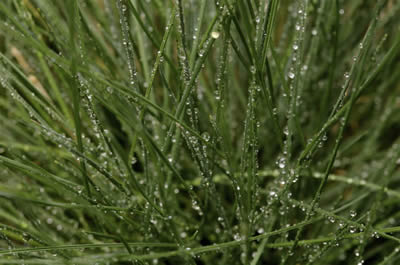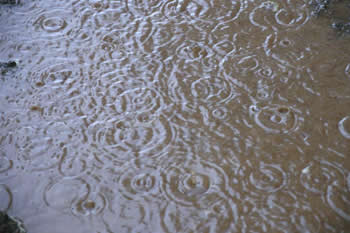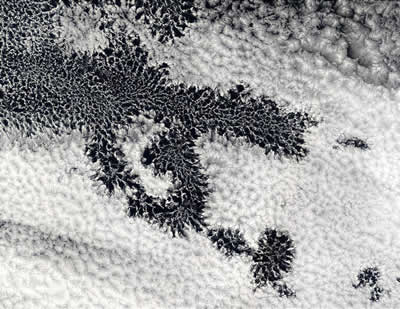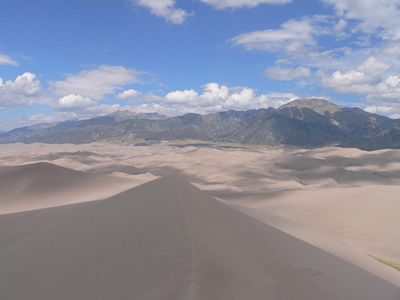View of cumulus clouds from the Great Sand Dunes National Park and Preserve near Alamosa, Colorado.
Click on image for full size
Courtesy of Olga and Sergei Kuznetsov
How Clouds Form
A cloud is composed of tiny water droplets or ice crystals that are suspended in the air. A series of processes have to happen in order for these water droplets or ice crystals to form into clouds in the atmosphere, and different types of clouds form from different processes. The four main ways that clouds can form are:
All of these processes involve the cooling of air. Warm air is able to hold larger amounts of water vapor than cool air, so when air cools it is no longer able to hold all of the water vapor it was able to hold when it was warm. This extra water vapor begins to condense out of the air into liquid water droplets.
Typically, water vapor needs some sort of particle, such as dust or pollen, to condense upon. These particles are called condensation nuclei. Eventually, enough water vapor will condense upon condensation nuclei to form a cloud. The water droplets in the cloud may eventually fall down to Earth in the form of rain or snow (or other forms of precipitation).
You might also be interested in:

Weather fronts can cause clouds to form. Fronts occur when two large masses of air collide at the Earth's surface. Warm fronts produce clouds when warm air replaces cold air by sliding above it. Many different
...more
Condensation is the process by which water changes its state from a vapor or gas to a liquid. Condensation is responsible for the formation of clouds. Common examples of condensation are: dew forming on
...more
When you look up at the sky, you are looking at more than just air. There are also billions of tiny bits of solid and liquid floating in the atmosphere. Those tiny floating particles are called aerosols
...more
Rain is precipitation that falls to the Earth in drops of 5mm or more in diameter according to the US National Weather Service. Virga is rain that evaporates before reaching the ground. Raindrops form
...more
Stratocumulus clouds are commonly found over the ocean in the Southeast Pacific region. These clouds can contain clear areas in the clouds that scientists call "pockets of open cells," or POCs.
...more
When clouds form they contain millions of water droplets in each cubic meter of air. Each of the cloud droplets forms on a particle; scientists call a collection of particles an aerosol. These particles
...more
For a long time, scientists have known that microorganisms can get into the atmosphere and travel long distances. But a new study shows how they help influence cloud formation. The effects of tiny airborne
...more















